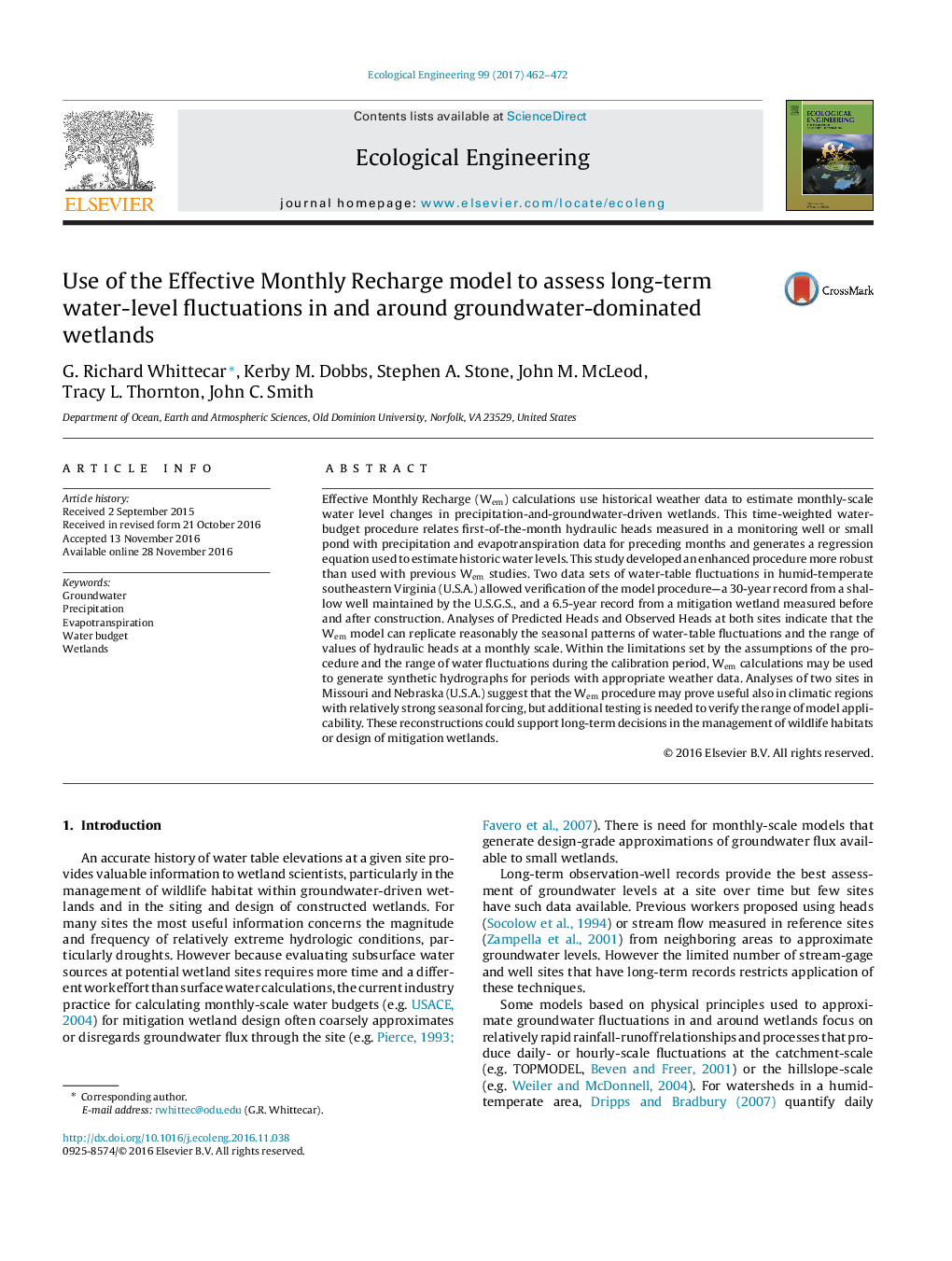| Article ID | Journal | Published Year | Pages | File Type |
|---|---|---|---|---|
| 5744015 | Ecological Engineering | 2017 | 11 Pages |
Effective Monthly Recharge (Wem) calculations use historical weather data to estimate monthly-scale water level changes in precipitation-and-groundwater-driven wetlands. This time-weighted water-budget procedure relates first-of-the-month hydraulic heads measured in a monitoring well or small pond with precipitation and evapotranspiration data for preceding months and generates a regression equation used to estimate historic water levels. This study developed an enhanced procedure more robust than used with previous Wem studies. Two data sets of water-table fluctuations in humid-temperate southeastern Virginia (U.S.A.) allowed verification of the model procedure-a 30-year record from a shallow well maintained by the U.S.G.S., and a 6.5-year record from a mitigation wetland measured before and after construction. Analyses of Predicted Heads and Observed Heads at both sites indicate that the Wem model can replicate reasonably the seasonal patterns of water-table fluctuations and the range of values of hydraulic heads at a monthly scale. Within the limitations set by the assumptions of the procedure and the range of water fluctuations during the calibration period, Wem calculations may be used to generate synthetic hydrographs for periods with appropriate weather data. Analyses of two sites in Missouri and Nebraska (U.S.A.) suggest that the Wem procedure may prove useful also in climatic regions with relatively strong seasonal forcing, but additional testing is needed to verify the range of model applicability. These reconstructions could support long-term decisions in the management of wildlife habitats or design of mitigation wetlands.
